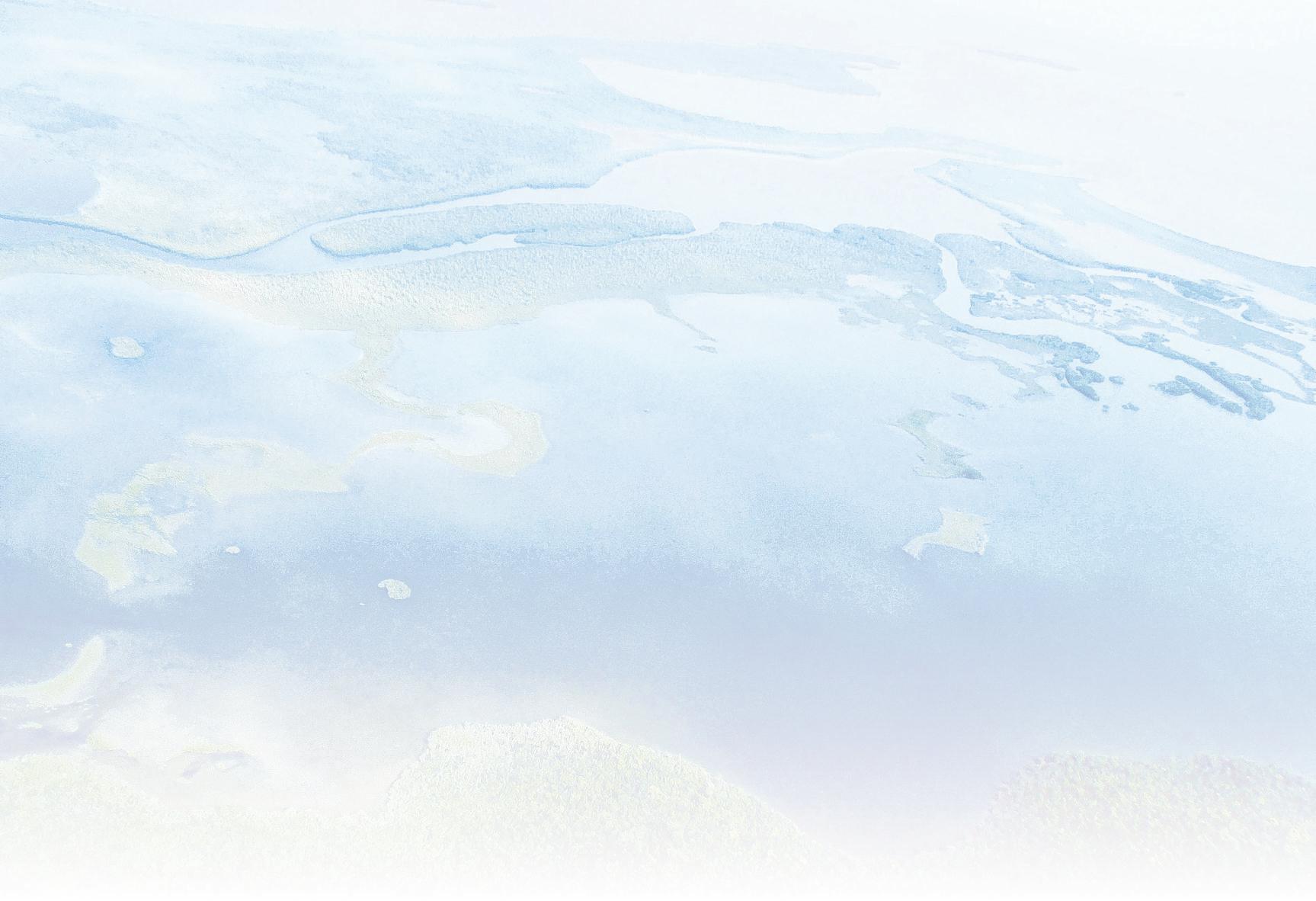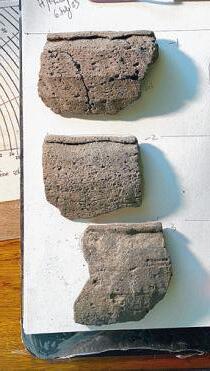


AChristmas tree reminds me that life finds away
Acoupleofyears ago, as the spread of COVID-19 subsided, my co-workers and Iplanted a memorial tree just outside our workplace. We wanted to remember those we’d lost during the pandemic,and it seemed that the best way to honor their memory was to look toward the future.
On abright March day,we stood in acircle at the edge of our parking lot, sharinga few wordsbefore we took shovels in hand and tucked asmall pond cypress into the ground.Itwas bare and spindly,more like a kindling than apropertree
But pond cypress trees thrive in Louisiana, thanks to their resilience and steady resolve in high wind. Our plucky little tree struck me as just the sortofmascot we needed to answer our grief.
Soon, the cypress yieldedtiny whispers of green, the colorso subtle that it could only be seen up close. My daily inspections of the branches became asmall respite before Istarted each morning’swork shift. The green gradually deepened, becoming more vivid at acasual glance. Istopped fussing over our cypress, and it quietly took up its work of angling toward the sky.Tough seasons of storms and drought broughtsome closecalls. After one long dry spell, Inoticed the tree’sbrown limbs and figured it was agoner But the cypress rebounded, announcing its return with velvety green patches.The new growth was so fine that I’d gently run my fingers across the lower branches, reading itlike Braille. Icouldn’tbelievethata thing so ravaged was reclaiming its place in the world. By last December, the cypress had grown strong enough to hold decorations. We looped afew white bulbs aroundits canopy,then gathered everyone in acircle again to offer season’sgreetings and light the tree.The holidays passed, and in the hurry of anew year,we somehowforgot to removethe lights. They were still in place when we opened this year’s holiday seasonbyformingour circle andlighting the tree. Cypress trees can grow quickly,and ours had added acouple of feet this year Those strands of lights, left for months, offered an outline of the tree as it used to be, now shadowed by the tree it has become. Thanks to that happy accident, my office mates and I got abright reminder that our
ä See AT RANDOM, page 2G
BY JOYHOLDEN Staff writer

AN LSUPROFESSOR’S STUDYOFWATERLOGGED POSTS CAUSES WORLDWIDESTIRINARCHAEOLOGICALCIRCLES



Maya
the



BY ROBIN MILLER Staff writer
Who would think that awaterlogged piece of rosewood could have enough glitzand glamor for aHollywood telling of an archaeological adventure?
In the summer of 2023, Heather McKillopand herLSU crew were neverlooking forsomething flashy while traipsing through the waters of aBelize lagoon. They were seeking out astory
The section of rosewood post stored in the water-filled, plastic container in LSU’s Coastal Archaeology of Latin American Laboratory opened the door to aforgotten story in Maya culture. (For the record, the correct adjective in the case, according to McKillop, is “Maya,” not the oft-used “Mayan.)

The word “forgotten” is also important. The story of Maya salt workers was well-known at thetimethey were extracting salt from brineduring the culture’sclassical era between 250 and 900 AD. It just faded with the culture’scollapse over time.
Potteryshards are traced and documented after excavation.

But in 2023, the LSU archaeologist andher crew notonlyresurrected thestoryofa Maya saltworks site, but what is thought to be the culture’soldest known saltworks operation.
“Thispost is 1,200 years old,” McKillop said.
Thesearchbegins
Water drips from the smooth, roundedrosewood in herhands. If this were Hollywood, the drips of water would segue into aflashback to the beginning of her own story McKillop is aprofessor in LSU’s Department of Archaeology & Geoscience. Her work focuses on


ROBIN MILLER Staff writer
archaeological field research on ancient Maya saltworks flooded by the ocean. She also uses 3D technology to preserve records of the salt-waterlogged pottery and wood excavated from these sites.
Her first archaeological project actually took her to the Northern Highlands of Peru. She was an undergraduate at Trent University in Peterborough, Ontario, Canada, at the time —and she decided tostay there for graduate school.
That’swhen her adviser sether on adifferent path, telling her the commissioner of archaeology of Belize asked for an archaeological excavation on an island outside of Belize City
“He asked if Iwould like to excavate thissite for my thesis,” she said. “I was working in water,and this project fit my background of canoeing, boating andall of those things. Ihad agreat time.”
Fastforward to 1990, when McKillop was offered ajob as an assistant professor at LSU, which, she said, had agreat reputation for coastal research. She also liked its proximity to Peru.
Back to Belize
But it was Belize —not Peru —to which she ventured backin 2004 on aproject funded by an LSU faculty grant
“I hired someone with afast boat that could take me from thenearesttown, which is about30miles away,tothis coastal lagoon, where I’d worked for many years,” McKillop said. “I published abook called ‘Salt White Gold of the Ancient Maya’ about the artifacts that we had found at three sites. Theywere jars and bowls with pot legs that were used to boil brine salty water in pots over fires to make salt.”
Salt was harvested when the concentrated salt brine solution was heated in the open pots until it reached aboiling point, causing the water to evaporate and leaving behind salt crystals
“The classic Maya withthe temples and palaces and huge populations in the inland areaofBelize andGuatemala, Mexico and Honduras needed salt and really didn’t have it,” McKillop said. “So, this is where they got their salt.”
Still, just finding the saltworks siteswasn’tenough. McKillop had to findsomething more about them, something that told their stories.
So, she used a2004 research granttomap aonceland-boundsite submerged in seawater, also called an ocean lagoon, whereshe and her
CURIOUS
Continued from page1G
Whowas Molly’smodel?
“Who was the model for Molly?” Jeffers asked. “And if there was aspecific model,did shelivein New Orleans?”
The answer to bothofthose questions is yes. Well, partly According to Katie Bowler Young’s2021 book, “EnriqueAlférez: Sculptor,” the artist asked his neighbor’sfriend, Judy Musgrove,tostand as amodel for the sculpture. Young says Alférez also incorporatedcharacteristics of four female Marines.
Musgrove reunited with Alférez at the Women Marines Association’s1966 national conference in New Orleans. The conference lasted 10 days with some of the time dedicated to cleaning and rededicating the sculpture, which had been standing only 23 years atthat time.
Both Alférez and Musgrove were invited to the event.
“It was quite areunion,” wrote Times-Picayune reporter Betsy Petersen in her June 26, 1966, article. “Together for the first time since those days were Enrique Alférez,the sculptor who devoted his talent, without charge, to the creation of Molly Marine; Mrs. Judy Musgrove, whois, you might say,the REAL Molly Marine —she posed for the statue; and Charles Gresham, nowa noted industrial designer, whose public relations efforts on behalf of the Marine Corps gave Molly her start in life.”
Theideafor Molly Gresham, atechnical sergeant and Marine recruiter in New Orleans, commissioned “Molly Marine” in hope of increasing the enlistment of women intothe military during World WarII.
“The minute they announced that women could be in the service, Idreamed up this thing,” Gresham told Petersen. “The statue was to be dedicated to women in all branchesofthe service, and Alférez was asked to design it. The Architectural Stone Co. donated the materials to cast the statue from Alférez.”

Archaeologist and LSU professor HeatherMcKillop shows a3Dprintedreproduction of the wooden Maya paddle her team discovered at aMayasaltworks excavationinBelize
team pulled on rubberboots and scaleditside-by-side while looking for more salt-makingevidence. The lagoon was labeled Site 15.
Thesewereshallow lagoons filled with red mangrove peat absent of such Louisiana swamp creatures as alligators, snakes and snapping turtles. Thewater was relatively clear,allowing full view of thelagoon’sfloor
That is, until theexplorers’ footsteps stirred siltinthe mangrove peat
Discoveryofwooden posts
Themangrove trees were the true survivors of the saltworks site, having grown taller through the years to keeptheir leaves above water as the ocean moved in.Still, there were some wooden protrusions among them thatdidn’tadd up.
“My goal was to collect 15 of the bowls and 15 pot legs and seehow standardizedtheywereintheir form,”McKillopsaid.“Thenmyboat driver,Jackie, whowas alsopartof theteam, pointed out the posts.”
Aback-and-forthensued. Were they roots or posts? Surely they couldn’t be postsunless they were sharpened on the bottom.
Oneofthe wooden pieces was eventually dislodged, to reveal that it was, indeed, apost with a sharpened bottom meant to support abuilding —asalt kitchen used to extract salt from brine.
“I thought, ‘I wrote this book in 2004, and wedidn’tfindwood,’ ” McKillop said. “ButinLouisiana, our wood isn’tpreserved by the rainforest, so we weren’t looking for wood in 2004.”
The team began mapping the site, finding the posts which had
been stationed to support rectangularbuildings with floors filled with brine boiling pottery
“Thatwas in Site 15.So, we decided to excavateanother site, Site 14, to seeifwecould find wooden poststhere,”McKillop said.
The firstofits kind
Site14was where the true prize was discovered —afull-sized Maya paddle.
“No ancientcanoe or paddle had ever been found before this,” McKillop said. “The Maya were all around the Yucatan Peninsula, so, of course, they had boats. But we had an oldpaddle. We photographed it. Then, we put it back, because as soon as we took the wood out of the peat and water,it started to deteriorate.”
McKillop’screweventually returnedtoretrieve the paddle and was granted permission by the Belizegovernment to bring it to Texasfor radiocarbontesting and professional conservation.
The piece now is part of the Museum of Belize’scollection,but McKillop was allowed to make 3D copies of it,which are stored amongthe other artifacts in the CoastalArchaeology Lab with one on displayinthe foyerLSU’s Howe-Russell Kniffen Geoscience Complex.
The paddle caused aworldwide stir in archaeology circles.
McKillop reported news of the paddle at theBelizeGovernment Conference, which eventually won her another grant for exploration. Findingthe oldest saltworks In 2019, she returned to Belizein ajoint project with the University

Gresham, himself, approached Alférez with his idea. As pointed out by Petersen, the sculptordonated histime and talent to make thestatueofafemale Marine reservist.
Musgrove,meanwhile, was a former professional model. She told Petersen that Alférez discovered her byaccident.
“I was visitingafriend’snew apartment, and Enrique came over to lightthe water heater for her,” Musgrove said. “Alférez invited us to hisstudio. And when we got there, he said, ‘Will youpleasestepuponthat stand there?’ He picked up theclay and started to model.”
Musgrovealso recalled that her husbandwas angry when he foundout that she was modeling after she promised she would quit theprofession “Butwho could resist thecharm of EnriqueAlférez or the honor of modeling forhim?”she said.
Thestory of EnriqueAlférez
Alférez was aMexican artist whosettled in New Orleansin 1929. Alongwith “Molly Marine,” hispublic artworks include the NewOrleans Lakefront Airport façade reliefs; the “Fountain of the Four Winds,” alsoatthe New Orleans Lakefront Airport;the bronzerelief “Louisiana At Work andPlay” abovethe entrance of Charity Hospital; the lagoon













